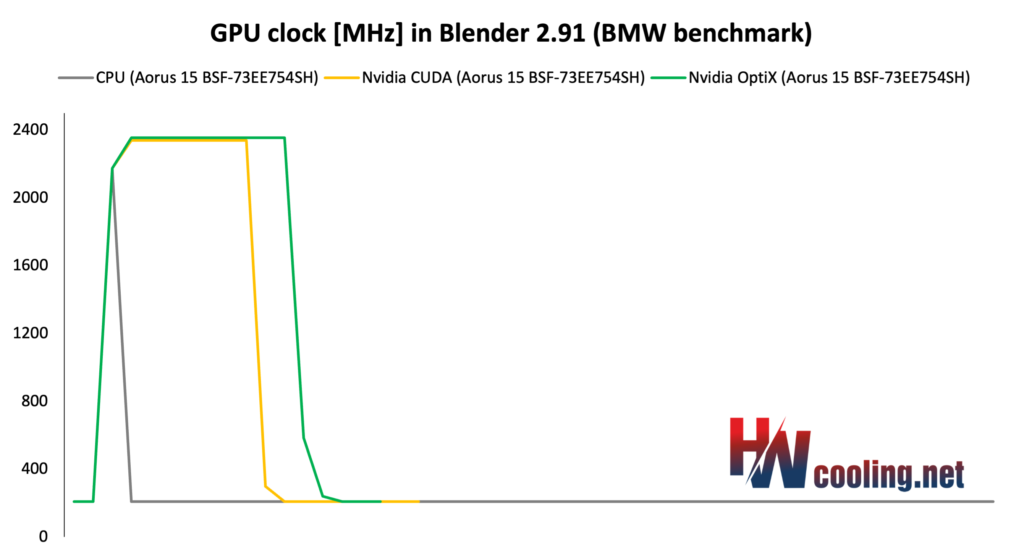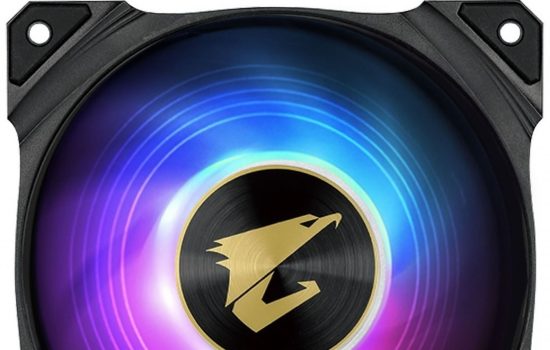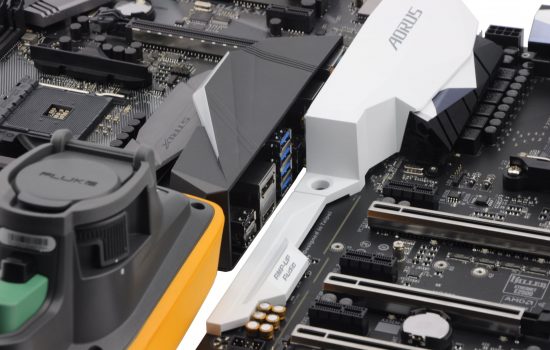Blender – CPU, CUDA and Optix tests
It took longer than I planned, but we finally got our hands on an Aorus gaming laptop. Specifically, the 15-inch model set for 2023 with a Raptor Lake Core i7 processor and an Ada Lovelace RTX 4070 graphics card. This configuration may impress with a rather attractive price. But then again, in the fierce competition from ROG, MSI and Legion models, the Aorus 15 BSF won’t have it so easy.
Blender – CPU, CUDA and Optix tests
We are introducing a new type of test in which we want to show you the differences between CPU and GPU rendering and also take a closer look at thermal management, clock speeds and power draw in practice and not just maximum or average values as in previous pages.
So we compare the progress of the BMW test in the latest version of Blender, where in addition to the classic CPU and GPU rendering using CUDA, we also have the opportunity to use the new Nvidia OptiX, which takes advantage of the new hardware resources of RTX GPUs. While CUDA works with shaders, OptiX also uses RT cores and tensor cores for acceleration. This more complex integration of compute units delivers higher performance and efficiency is also at a better level. Meanwhile, application support is already quite decent and comprehensive. You can see an overview of the editors supported by the Optix API on the Nvidia website. Nvidia is serious about this interface, and for some time now has been developing, in addition to gaming drivers, “studio” drivers that are better optimized for changes in supported applications.
In the first graph, you are looking at the CPU clock speed curve over the course of the render. The classic CPU mode gradually decreases from 4 to 3.1 GHz. With the combined workload in CUDA mode, we see a straight line around 3.6 GHz and two spikes. In OptiX, the clock speed drops significantly after a short time, but in this mode the CPU is not even used, so we don’t need to worry about this result.
CPU Package power draw shows that CPU mode under full load can draw over 100 W, but this value drops below 80 W over the course of the test. CUDA also reaches a similar threshold but then falls very quickly due to the short duration of the test. OptiX hovers around 30 W.
The CPU temperature graph is very important. The combined load this time pushed the temperatures above 90°C, while the standalone CPU test went from the initial 83°C to somewhere just above 70°C. The OptiX is bouncing around 65°C, which is just a side effect of the interconnected cooling with the graphics card.
Graphics card load in CPU mode is practically minimal, on the other hand in CUDA and OptiX you can see full load. Note that the full utilization in CUDA is only half that of OptiX, so realistically the GPU was only used for a short while.
GPU clock speeds in CPU mode are of course at a minimum, as dedicated GPU is not used. With OptiX again we see a straight line at 2400, CUDA also gets to this level, but only for a short while. The OptiX chart shows us excellent stability at high GPU clock speeds.
We see interesting differences in GPU power draw, where OptiX hovers around 53 W and CUDA has a maximum of 76 W. In CPU mode, power draw is practically zero. In neither case, however, did we see the claimed 140 W that the laptop should theoretically offer.
Finally, a look at GPU temperatures. For the CPU, there is a visible rising line to 43 °C. In OptiX, a large part of the chip is working, yet the temperature only attacks 46 degrees Celsius. In combined CUDA mode, the maximum was 57°C.
As always, we can see differences between the different rendering modes in Blender. We’ll start with the slowest one, which is CPU mode. The measured value is better than the older tested pieces SCAR 17 and Legion 7, which both had just over 200 seconds, but the GT77 Titan and SCAR 18 with Core i9s and times of 84 and 115 seconds, respectively, are far ahead of the Aorus. CUDA is surprisingly similar though with a time of 33 seconds and the Titan is only 2 seconds better, despite the several times higher price tag. In OptiX, the Aorus even beats the Titan by 3 seconds.
- Contents
- Parameters and details
- Testing methodology
- Display tests
- Rendering and Geekbench
- 3D/PC Mark and Unigine Heaven/Superposition
- Gaming Tests – Dedicated GPU
- Encryption, encoding
- Memory and storage tests
- Temperature and battery life
- Blender – CPU, CUDA and Optix tests
- Performance modes
- Utility App
- Evaluation


















